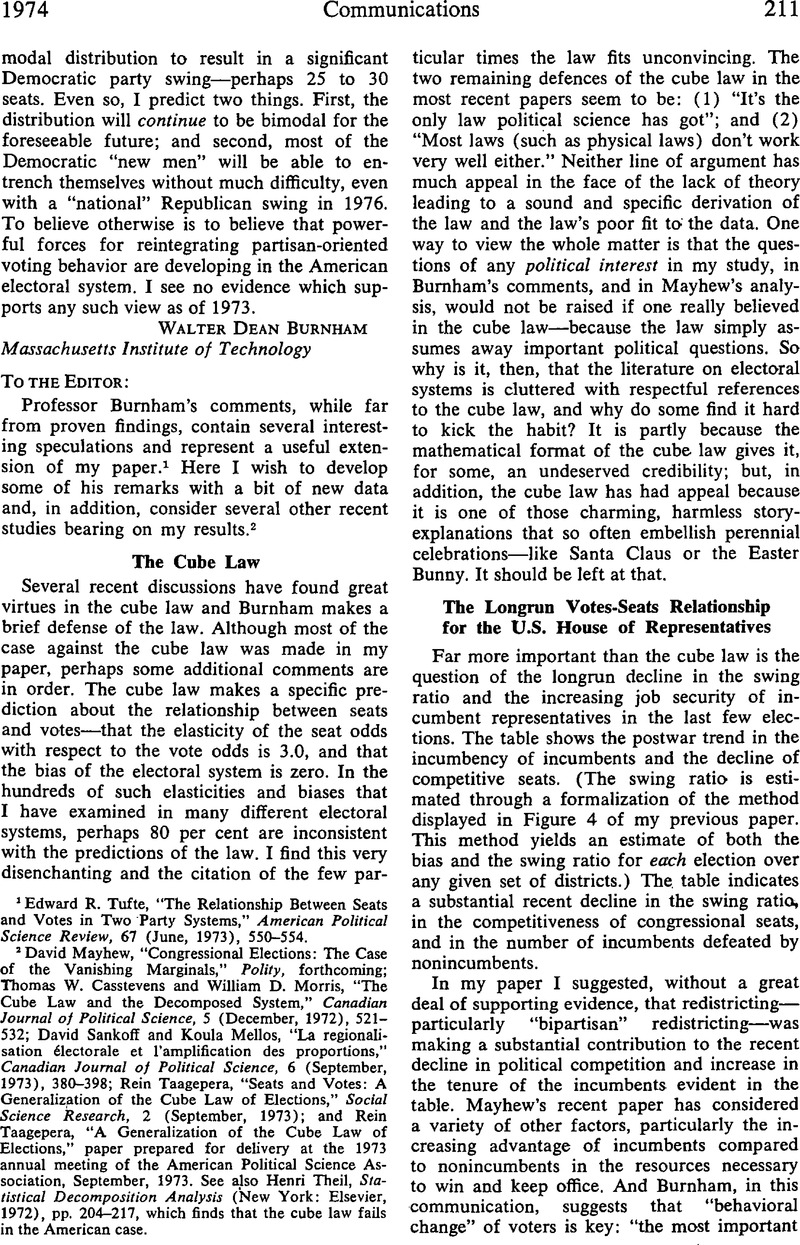Published online by Cambridge University Press: 01 August 2014

1 Tufte, Edward R., “The Relationship Between Seats and Votes in Two Party Systems,” American Political Science Review, 67 (June, 1973), 550–554 CrossRefGoogle Scholar.
2 David Mayhew, “Congressional Elections: The Case of the Vanishing Marginals,” Polity, forthcoming; Casstevens, Thomas W. and Morris, William D., “The Cube Law and the Decomposed System,” Canadian Journal of Political Science, 5 (December, 1972), 521–532 CrossRefGoogle Scholar; Sankoff, David and Mellos, Koula, “La regionalisation électorale et l'amplincation des proportions,” Canadian Journal of Political Science, 6 (September, 1973), 380–398 CrossRefGoogle Scholar; Taagepera, Rein, “Seats and Votes: A Generalization of the Cube Law of Elections,” Social Science Research, 2 (September, 1973)CrossRefGoogle Scholar; and Rein Taagepera, “A Generalization of the Cube Law of Elections,” paper prepared for delivery at the 1973 annual meeting of the American Political Science Association, September, 1973. See also Theil, Henri, Statistical Decomposition Analysis (New York: Elsevier, 1972), pp. 204–217 Google Scholar, which finds that the cube law fails in the American case.
3 Gallagher, John F. and Weschler, Louis F., “California” in Bushneil, Eleanore, ed., Impact of Reapportionment on the Thirteen Western States (Salt Lake City: University of Utah Press, 1970), p. 86 Google Scholar.
Comments
No Comments have been published for this article.